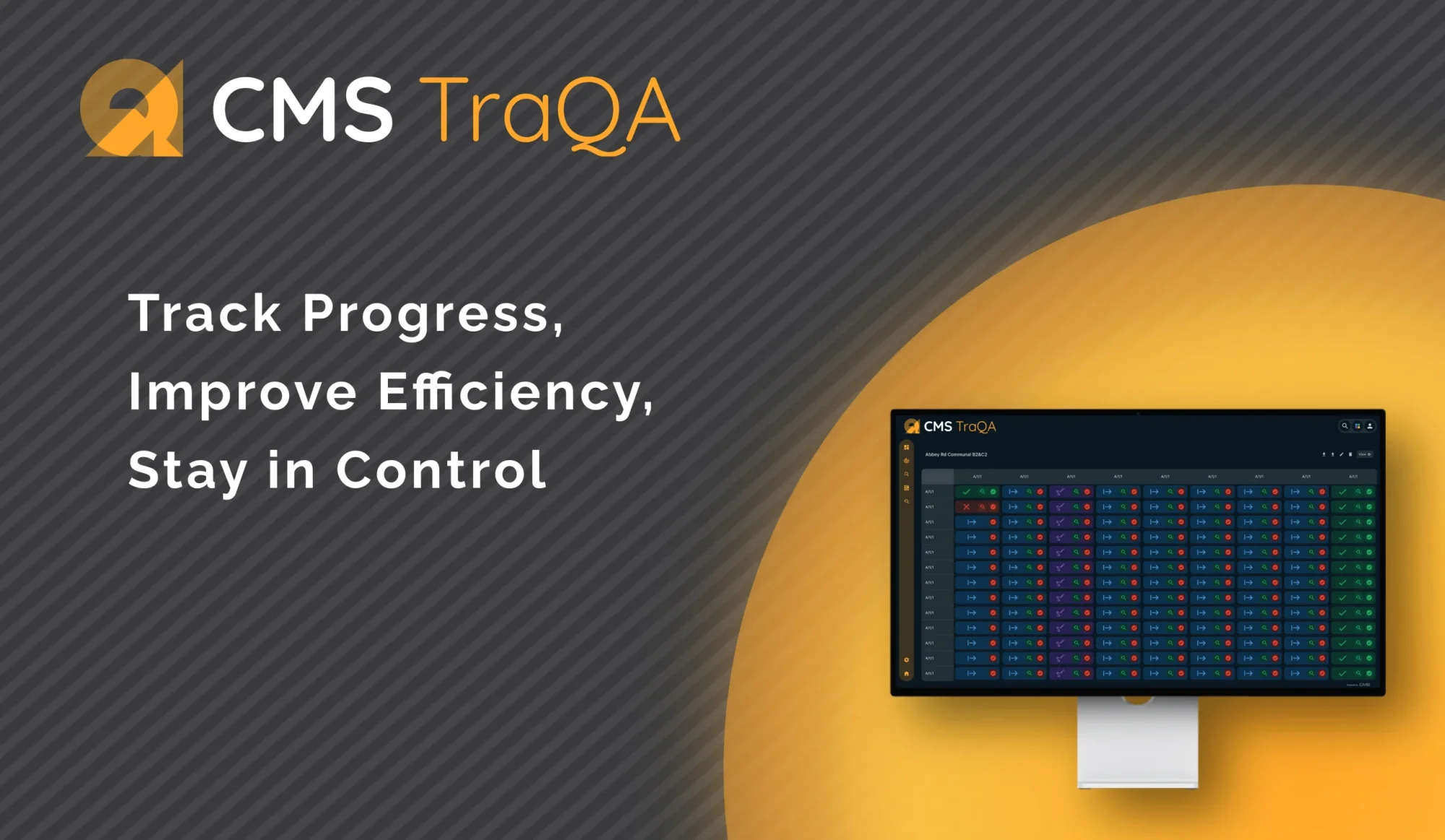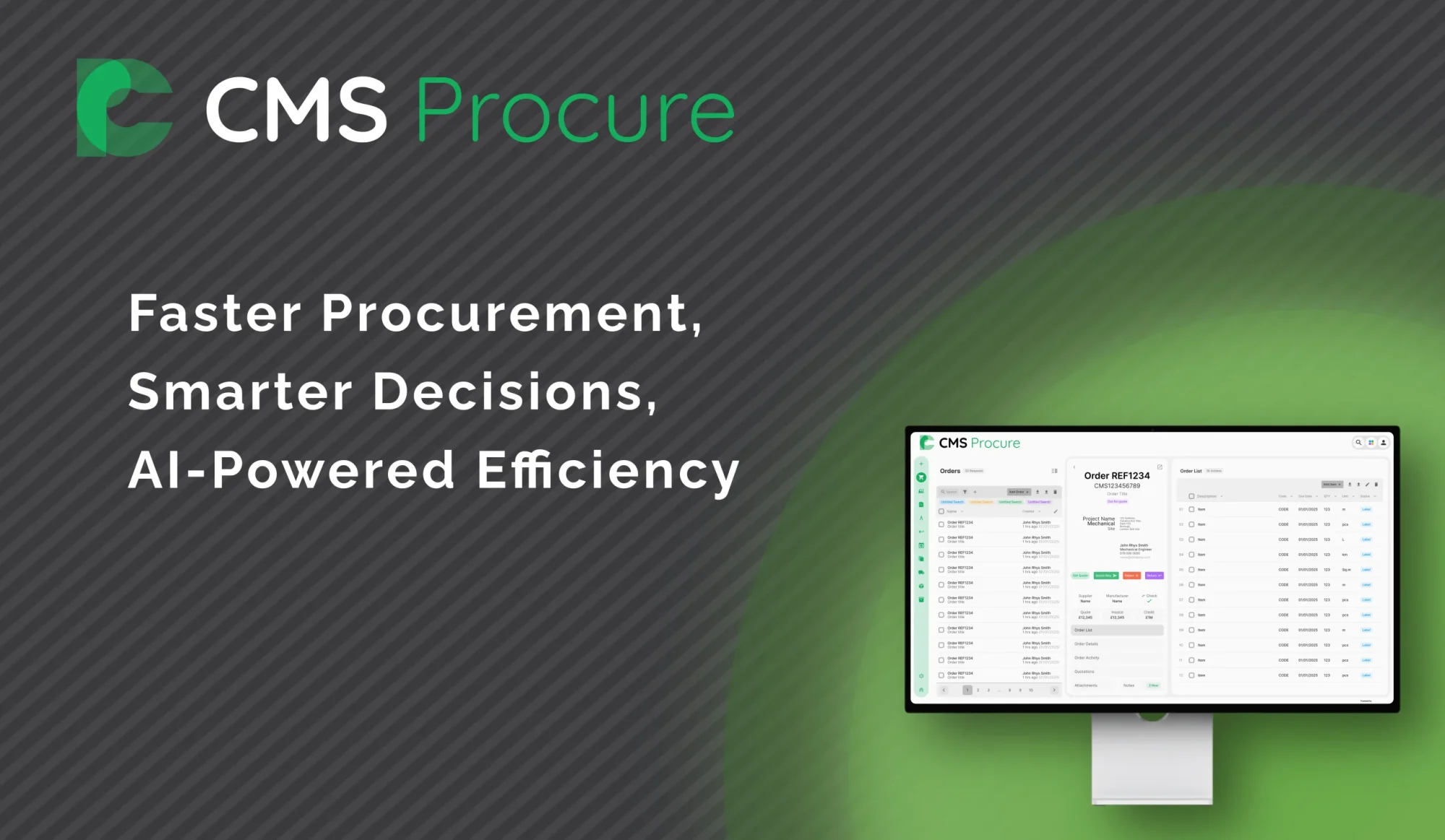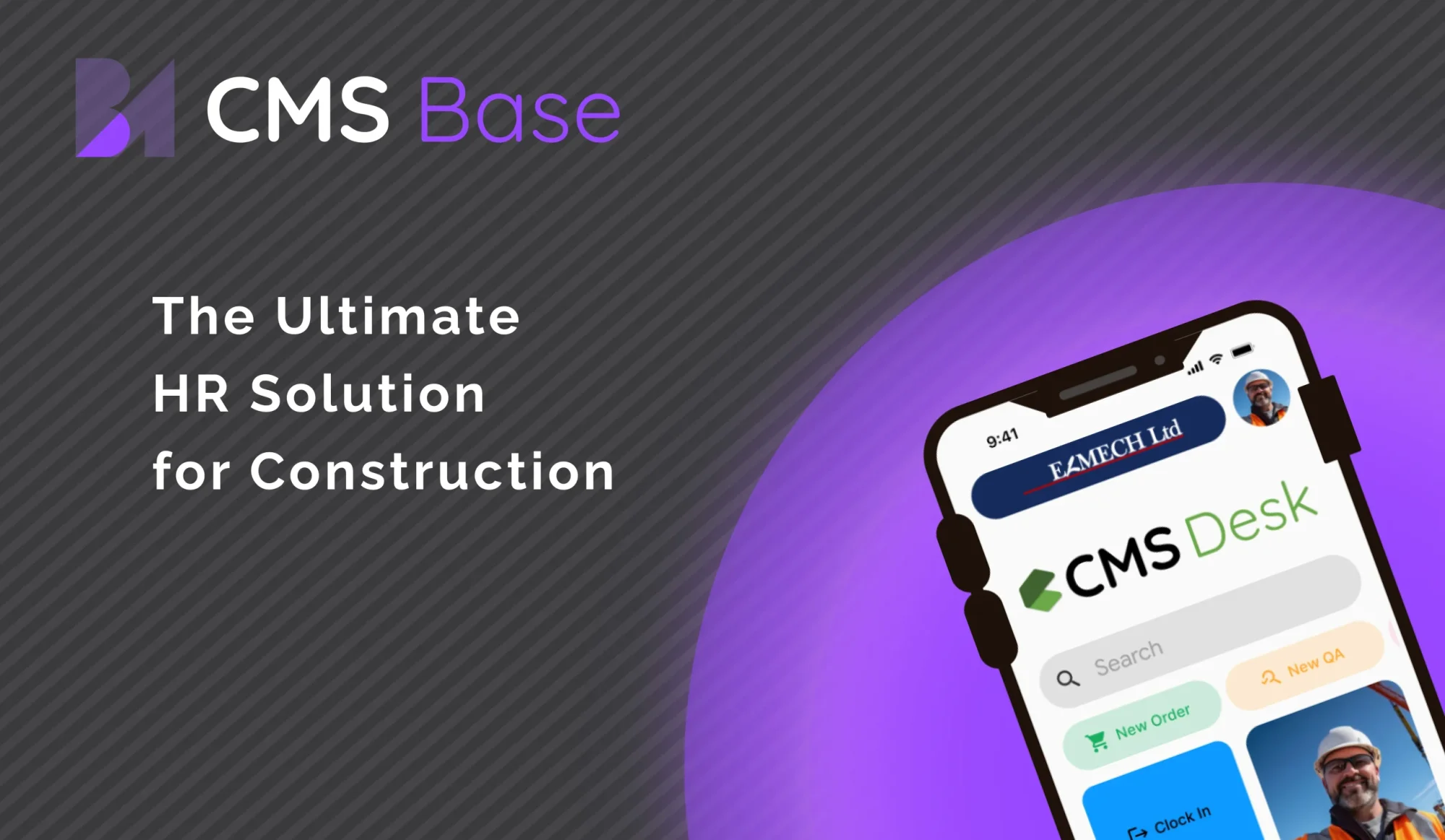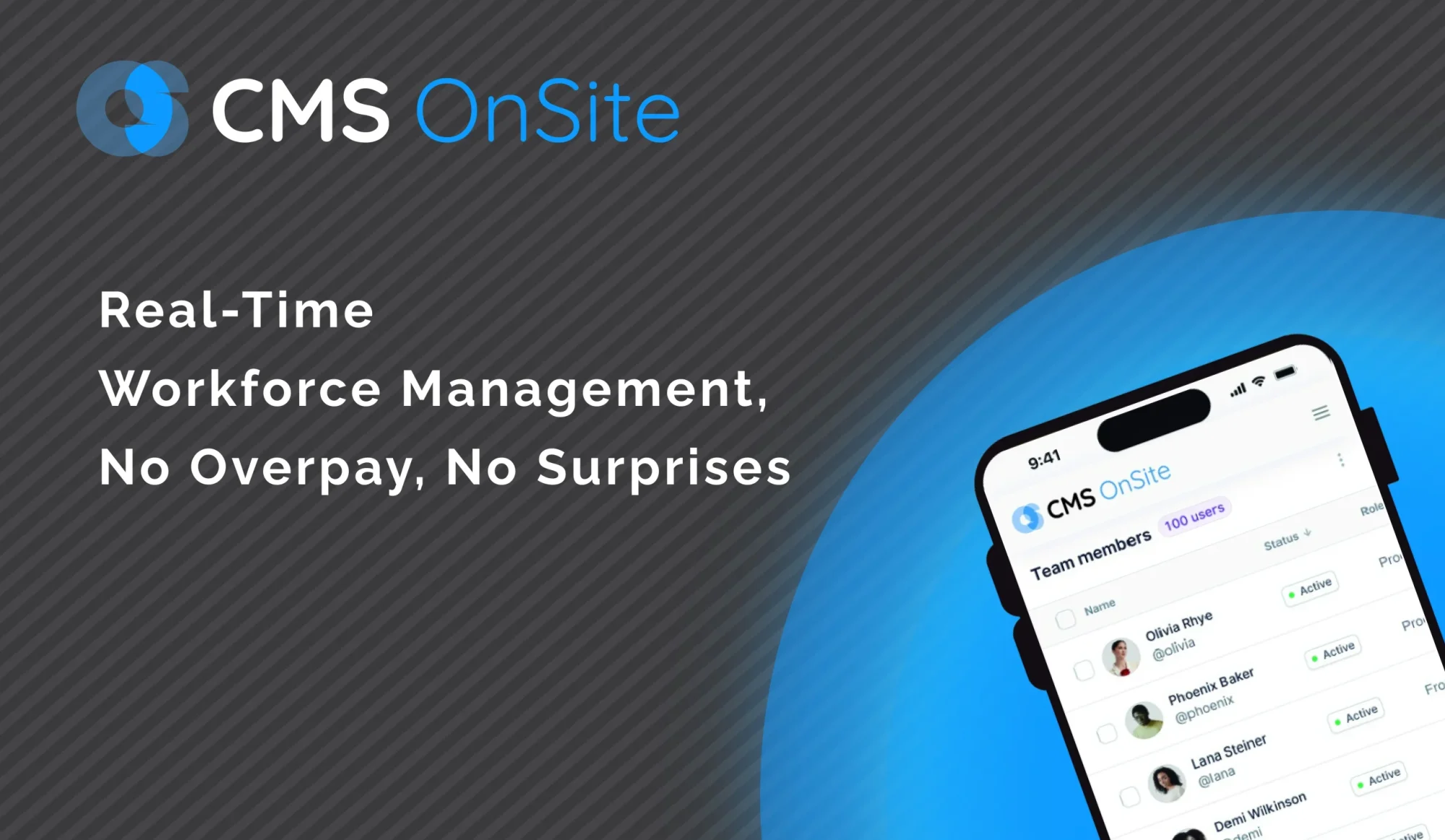
Every business relationship — whether with a supplier, contractor, employee, or client — relies on a clear, enforceable agreement. At the heart of these agreements lies contract management: the process of creating, negotiating, executing, and overseeing contracts to ensure that all parties meet their obligations.
Effective contract management goes beyond paperwork. It’s a strategic tool that safeguards your organisation, reduces legal and financial risks, and enables smoother collaboration across departments. Whether you work in procurement, HR, construction, or project delivery, understanding how to manage contracts from start to finish can significantly impact performance and growth.
In this guide, we’ll explore the full scope of contract management — from lifecycle stages and key responsibilities to use cases across industries and the digital tools that make it easier. You’ll also discover how platforms like CMS Desk help modern businesses streamline contract workflows and stay ahead.
What Is Contract Lifecycle Management (CLM) System? Managing Contracts from Start to Finish
Contract Lifecycle Management (CLM) takes contract management a step further by covering every phase a contract goes through — from initial request and drafting to negotiation, execution, compliance monitoring, amendments, renewals, and eventual closure. CLM aims to optimise each phase for speed, accuracy, and legal compliance, often using specialised software to automate workflows.
By managing contracts in a structured lifecycle, businesses can reduce turnaround times, prevent missed deadlines, and improve collaboration between departments such as legal, procurement, and finance. For example, CLM software can automatically flag renewal dates, send reminders for performance reviews, and maintain an audit trail of all contract changes, enabling organisations to stay on top of their commitments and improve supplier relationships.
These systems not only centralise contract documents but also offer built-in templates, e-signature functionality, compliance checks, and performance analytics. For organisations dealing with large volumes of contracts across various teams or geographies, CLM software provides invaluable visibility and control. For example, a multinational company can use a CLM system to ensure all contracts comply with local regulations while standardising processes globally, reducing risk and increasing efficiency.
The Contract Manager’s Role: Guardian of Agreements
A contract manager’s responsibilities go far beyond administrative tasks. They are the custodians of the contract process, ensuring agreements are drafted carefully, negotiated fairly, and executed according to plan. Their work includes coordinating with legal teams to assess risks, collaborating with procurement or sales to align contracts with business goals, and monitoring ongoing performance.
In large organisations, contract managers often act as the nexus between different departments — balancing legal compliance with commercial interests. For example, a contract manager might negotiate payment terms to improve cash flow while ensuring the supplier meets quality standards. They also play a vital role in resolving disputes, managing contract renewals, and supporting audits, ultimately contributing to stronger, more transparent business relationships.
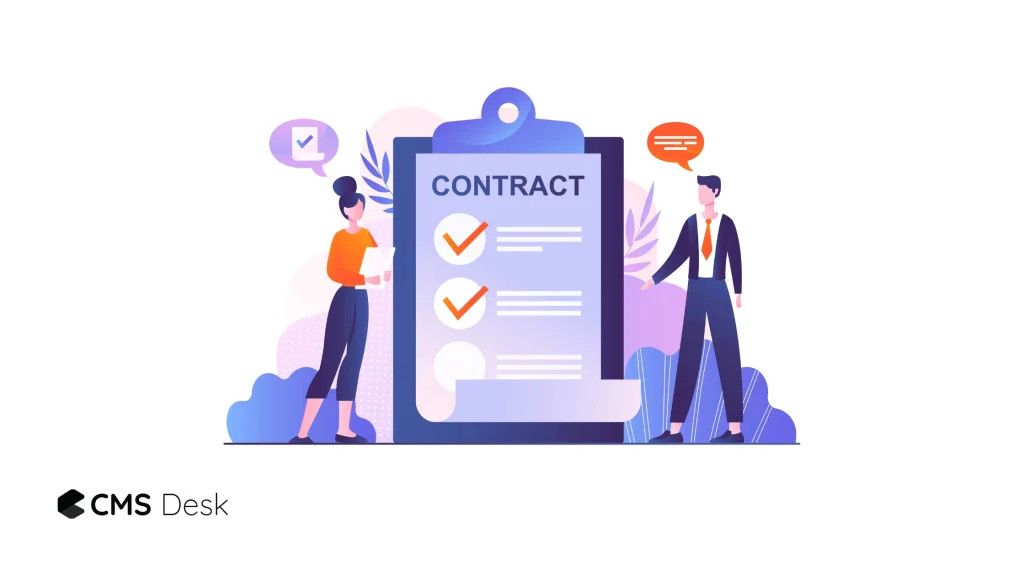
Why Is Contract Management Important?
Contracts form the backbone of commercial relationships. Contract management in a business context involves overseeing the creation, execution, and performance of these agreements to safeguard company interests and optimise outcomes. It is essential for reducing legal and financial risks, improving operational efficiency, and fostering trust between parties.
Effective contract management enables businesses to monitor supplier performance, control costs, and ensure compliance with internal policies and external regulations. For example, a retailer relying on multiple vendors uses contract management to track delivery times and quality standards, avoiding stockouts and customer dissatisfaction. In essence, it’s a strategic tool that aligns business processes with contractual obligations, protecting value and reputation.
Procurement vs Contract Management: Understanding the Distinction
While procurement and contract management are closely linked, they serve different purposes within an organisation. Procurement focuses on identifying needs, selecting suppliers, negotiating prices, and placing orders — essentially, getting the best value for money. Contract management picks up where procurement ends, ensuring the agreed terms are honoured throughout the contract’s life.
A seamless handover between procurement and contract management teams is vital. Procurement negotiates and secures the deal, but contract management monitors delivery, manages risks, and handles renewals or disputes. For instance, procurement might negotiate a discount for bulk purchases, but contract management ensures that the supplier delivers the agreed-upon quantities on time and at the specified quality.
Project Management & Contracts: Where Scope Meets Strategy
In project management, contracts are vital tools that define responsibilities, timelines, and deliverables between the project owner and external parties such as suppliers, contractors, or consultants. Contract management within this context ensures that all parties adhere to agreed terms, which helps keep the project on schedule, within budget, and aligned with the intended scope.
Project managers rely on contracts to clarify expectations and manage risks associated with vendor performance, payment milestones, and resource allocations. For example, in a software development project, contracts might specify delivery of key features by certain dates and penalties for delays. Effective contract management enables early identification of potential issues, such as missed deadlines or scope creep, allowing timely corrective action. Furthermore, collaboration between project and contract managers helps balance contractual obligations with practical project realities, ensuring smooth execution and successful project completion.
Contract Management in HR: Protecting People and Policies
Human Resources contract management involves overseeing agreements related to employment, consultancy, benefits, and confidentiality. It plays a fundamental role in defining the terms and conditions of employment, safeguarding both the organisation and its people.
Employment contracts clearly outline roles, responsibilities, remuneration, probation periods, and termination clauses, ensuring legal compliance and mutual understanding. Non-disclosure agreements protect sensitive company information, while consultancy contracts define deliverables and payment terms. Effective HR contract management fosters a transparent workplace culture, minimises disputes, and ensures adherence to labour laws. For example, a well-drafted employment contract reduces the risk of misunderstandings regarding job expectations and exit conditions, protecting both employee and employer rights.
Contract Management vs Contract Administration: Clarifying Roles and Responsibilities
While these terms are often used interchangeably, contract management and contract administration have distinct meanings. Contract administration generally refers to the more routine, clerical tasks post-contract award — such as record keeping, processing amendments, and tracking deliverables.
Contract management is a broader, strategic function that encompasses the entire contract lifecycle, including drafting, negotiation, compliance monitoring, performance management, and renewal decisions. Larger organisations often have separate teams or roles for each, with contract managers focusing on strategic oversight and contract administrators handling day-to-day operations.
Contract Management in Construction: Managing Complexity On-Site
Construction projects are inherently complex, often involving multiple stakeholders, extensive regulatory requirements, and high financial stakes. Contract management in construction plays a critical role in coordinating between project owners, general contractors, subcontractors, suppliers, and consultants to ensure that projects run smoothly from start to finish.
Construction contracts typically cover project scope, schedules, costs, change orders, safety compliance, and warranties. Managing these contracts involves not only tracking progress against agreed milestones but also handling inevitable changes due to unforeseen site conditions or design modifications. For instance, a contract manager in construction might oversee change order approvals to prevent scope creep or cost overruns. Proper contract management mitigates disputes, supports regulatory compliance, and protects against delays, making it essential for timely, on-budget project delivery.
Supply Chain Contracts: Keeping the Flow Moving
The supply chain is a complex network where timely delivery, quality assurance, and cost control are crucial. Contract management in the supply chain ensures that agreements with suppliers, transporters, and logistics providers are honoured, maintaining the smooth flow of goods from origin to destination.
These contracts cover delivery schedules, quality specifications, pricing terms, liability clauses, and penalties for non-performance. Effective management requires constant monitoring of compliance and coordination across multiple parties and geographies. For example, a retailer may rely on contract management to track supplier adherence to delivery windows, reducing the risk of stock shortages or delays. Given the global nature of many supply chains, contract managers must also navigate regulatory requirements, customs, and international trade laws, making comprehensive contract oversight indispensable for operational success.
Step-by-Step: Understanding the Contract Management Process
Managing contracts well means following a clear, thorough process that protects your organisation at every stage. Each phase is crucial — skipping steps or rushing can lead to costly errors or disputes. Here’s a deep dive into the essential stages:
1. Initiation: Defining Needs and Identifying Stakeholders
The first step is understanding what the contract must achieve. This involves defining the business need—whether it’s purchasing, hiring, or collaborating—and identifying everyone involved, such as legal teams, finance, and operational managers. Early stakeholder involvement ensures all perspectives are considered and reduces later misunderstandings. For instance, a construction firm starting a subcontractor agreement will include project managers and legal advisors at this stage to clarify scope and risk.
2. Authoring: Drafting the Agreement Terms
Drafting the contract demands precision and clarity. The terms must comprehensively cover deliverables, payment, timelines, liabilities, confidentiality, and dispute resolution. Collaboration between legal experts and contract managers ensures the language is legally sound yet practical. Using templates or clause libraries speeds this process while maintaining compliance. Ambiguity here can cause conflicts later — so specifics like exact delivery dates and quality standards are critical.
3. Negotiation: Aligning Expectations and Fine-Tuning Clauses
Negotiation is the art of balancing interests. Both parties review the draft, propose changes, and seek mutually agreeable terms. Good negotiators listen carefully, address concerns, and remain flexible while protecting key priorities. This phase can involve back-and-forth discussions and requires clear documentation of agreed changes. A supplier might ask for extended payment terms, while the buyer seeks stricter penalties for late delivery.
4. Approval & Execution: Getting Legal and Managerial Sign-Off
Before a contract becomes binding, it must be approved by the appropriate internal authorities—legal, finance, and senior management depending on risk and value. This formal review protects the organisation and ensures policy compliance. Increasingly, companies use digital signature platforms that speed up approvals and provide secure, auditable records. Once signed, the contract is legally enforceable and parties are bound to its terms.
5. Performance Monitoring: Tracking Deliverables and Compliance
After signing, continuous monitoring ensures obligations are met. This means tracking deadlines, quality benchmarks, payments, and other KPIs. Contract managers often use software dashboards to flag upcoming renewals, alert on breaches, and provide performance analytics. For example, a retailer might monitor vendor delivery times to prevent stockouts. Prompt issue resolution keeps projects on track and reduces disputes.
6. Amendments & Renewals: Adjusting or Extending the Contract Terms
Business needs evolve, so contracts often require updates. Amendments formalise agreed changes like scope adjustments or pricing updates, while renewals decide if the contract continues or ends. Managing these proactively avoids automatic renewals with unfavourable terms or unintended contract lapses. Alerts and workflow approvals in contract software help ensure timely and compliant amendments or renewals.
7. Closure: Finalising Obligations and Archiving
Once all obligations are fulfilled, contracts reach closure. This involves confirming deliverables are complete, payments settled, and any disputes resolved. Proper closure also includes documentation of lessons learned and secure archiving of contracts for audits or future reference. Efficient archiving facilitates historical analysis, risk management, and informs future contract negotiations.
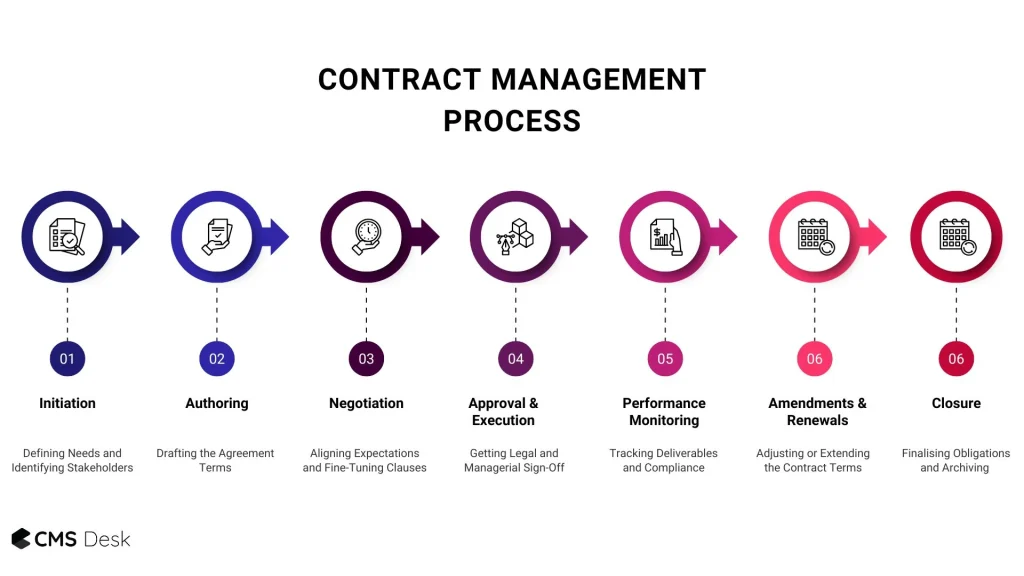
Benchmarking in Contract Management: Measuring Success and Driving Improvement
Benchmarking in contract management means comparing your organisation’s contract performance metrics against industry standards or best practices. This process helps identify areas of strength and uncover opportunities for improvement.
Common benchmarks include contract cycle times, compliance rates, cost savings achieved through negotiation, and renewal success rates. For example, if your average contract approval time is longer than the industry norm, you may investigate process bottlenecks or approval delays. Regular benchmarking drives continuous improvement, enabling your team to optimise workflows, reduce risks, and deliver better value from contracts.
Ethics in Contract Management: The Cornerstone of Trust and Compliance
Ethics in contract management involves conducting business fairly, transparently, and in good faith. It means drafting clear, honest contracts, respecting confidentiality, honouring commitments, and adhering to legal and regulatory requirements.
Upholding strong ethical standards reduces the risk of disputes, litigation, and reputational damage. It also fosters trust and long-term partnerships, which are vital for sustainable business success. For example, ethical contract managers ensure that clauses are not exploitative and that both parties understand and agree to their responsibilities. This commitment to integrity helps organisations avoid legal pitfalls and build goodwill.
End-to-End Contract Management: Seeing the Full Picture
End-to-end contract management means managing every phase of a contract’s lifecycle seamlessly — from initial request through drafting, negotiation, execution, performance monitoring, amendments, renewal, and final closure.
Having an integrated process or system that covers the entire lifecycle reduces errors, increases transparency, and enables better control over contractual obligations. This holistic approach supports audit readiness, regulatory compliance, and strategic decision-making by providing full visibility of contract status and history.
What to Look For in Contract Management Software: Key Features That Matter
Choosing the right contract management software is critical. Key features to consider include:
- User-Friendly Interface: Easy navigation reduces training time and boosts adoption.
- Customisation: Ability to tailor templates, workflows, and approval hierarchies.
- Integration: Seamless connectivity with ERP, CRM, and document management systems.
- Security: Robust data protection, encryption, and compliance with GDPR or other regulations.
- Automation: Alerts for deadlines, automated approvals, and contract creation tools.
- Analytics & Reporting: Insights into contract performance and risks.
Selecting software with these features ensures your organisation maximises efficiency, reduces risks, and gains actionable insights from its contract portfolio.
Frequently Asked Questions (FAQ)
1. Why is contract management important?
Effective contract management reduces risk, ensures compliance, improves collaboration, and saves time and money across all industries.
2. What’s the difference between contract management and contract administration?
Contract management is the strategic oversight of the full contract lifecycle, while contract administration focuses on the post-award execution and record-keeping tasks.
3. Can small businesses benefit from contract management software?
Absolutely. Many software solutions are scalable and help small teams stay organised and legally protected.
4. How can contract management software improve efficiency?
By automating routine tasks such as alerts, approvals, and document storage, it reduces human error and speeds up contract cycles.
5. What are common pitfalls in contract management?
Common issues include unclear contract terms, lack of stakeholder involvement, missed deadlines, and poor performance monitoring.
Any questions? Get in Touch
